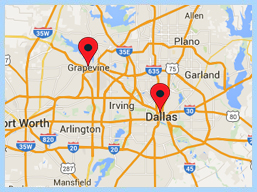Osteoarthritis
Also called degenerative joint disease, this is the most common type of arthritis, which occurs most often in older people. This disease affects cartilage, the tissue that cushions and protects the ends of bones in a joint. With osteoarthritis, the cartilage starts to wear away over time. In extreme cases, the cartilage can completely wear away, leaving nothing to protect the bones in a joint, causing bone-on-bone contact. Bones may also bulge, or stick out at the end of a joint, called a bone spur.
Osteoarthritis causes joint pain and can limit a person’s normal range of motion (the ability to freely move and bend a joint). When severe, the joint may lose all movement, causing a person to become disabled. Disability most often happens when the disease affects the spine, knees, and hips.
Symptoms
Arthritic symptoms generally include swelling and pain or tenderness in one or more joints for more than two weeks, redness or heat in a joint, limitation of motion of joints, early morning stiffness, and skin changes, including rashes.
Doctors diagnose arthritis with a medical history, physical exam and x-rays of the affected joint. There is no blood test for osteoarthritis.
Causes and risk factors
Osteoarthritis is caused by the wearing out of the cartilage covering the bone ends in a joint. This may be due to excessive strain over prolonged periods of time, or due to other joint diseases, injury or deformity. Primary osteoarthritis is commonly associated with aging and general degeneration of joints.
Secondary osteoarthritis is generally the consequence of another disease or condition, such as repeated trauma or surgery to the affected joint, or abnormal joint structures from birth.
Some conditions may predispose the joint to osteoarthritis. It tends to affect people as they get older and particularly affects joints that have to take additional stresses and strains.
- A previous fracture that involved the joint.
- Growth abnormalities of the joint (such as a shallow socket) may lead to premature arthritis.
- Inactive lifestyle & obesity- Your weight is the single most important link between diet and arthritis, as being overweight puts an additional burden on your hips, knees, ankles, and feet. Changing lifestyle and dietary patterns can help alleviate this added pressure on joints and reduce inflammation which can relieve symptoms of osteoarthritis in many individuals.
Abnormalities of knee joint function resulting from fractures of the knee, torn cartilage and torn ligaments can lead to degeneration many years after the injury. The mechanical abnormality leads to excessive wear and tear.
Management of Osteoarthritis
There are several treatments and lifestyle modifications that can help you ease your pain and symptoms.
- Reducing Inflammatory Signals: Many individuals with chronic joint pain and osteoarthritis suffer from chronically high inflammatory signals, which can exacerbate pain response. Part of our initial bloodwork assessment is to determine your regular production of several common inflammatory markers to see if reducing inflammation will help address your pain or your risk of developing heart disease and insulin resistance.
- Weight Reduction: Reducing your body weight through lifestyle programs can help reduce pressure on sensitive joints and reduce painful symptoms while improving quality of life.
- Medications: Pain-relieving medications such as NSAIDs, COX-2 inhibitors and opiods may be prescribed but have side effects regarding stomach, kidney, and liver function, particularly with prolonged use. More natural alternatives to these are available, including Kaprex, which has been shown to have no known adverse effects on liver, stomach, or kidney function.
- Other Treatments: Certain exercises can keep joints flexible and improve muscle strength. Heat/cold therapy which involves applying heat or cold packs to the joints provides temporary pain relief.
Dallas
3800 San Jacinto
Dallas, TX 75204
(214) 827-8777
Driving DirectionsHours:
Monday, Wednesday,
Friday: 8:00 a.m. - 11:00 a.m.
Tuesday: 4:00 p.m. - 7:00 p.m.Grapevine
823 Ira E. Woods Avenue
Grapevine, TX 76051
(214) 827-8777
Driving DirectionsHours:
Thursday: 1:30 p.m. - 5:00 p.m.






